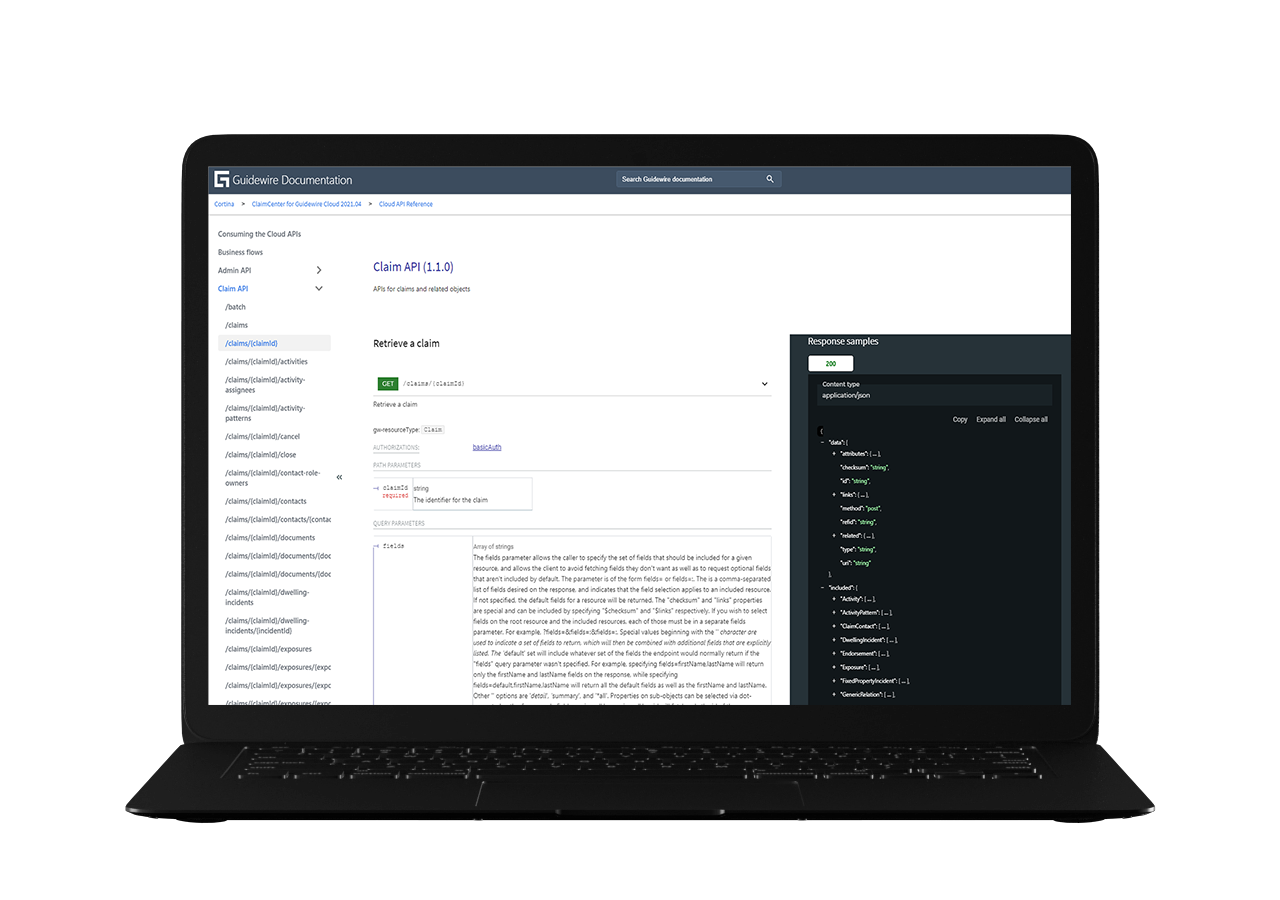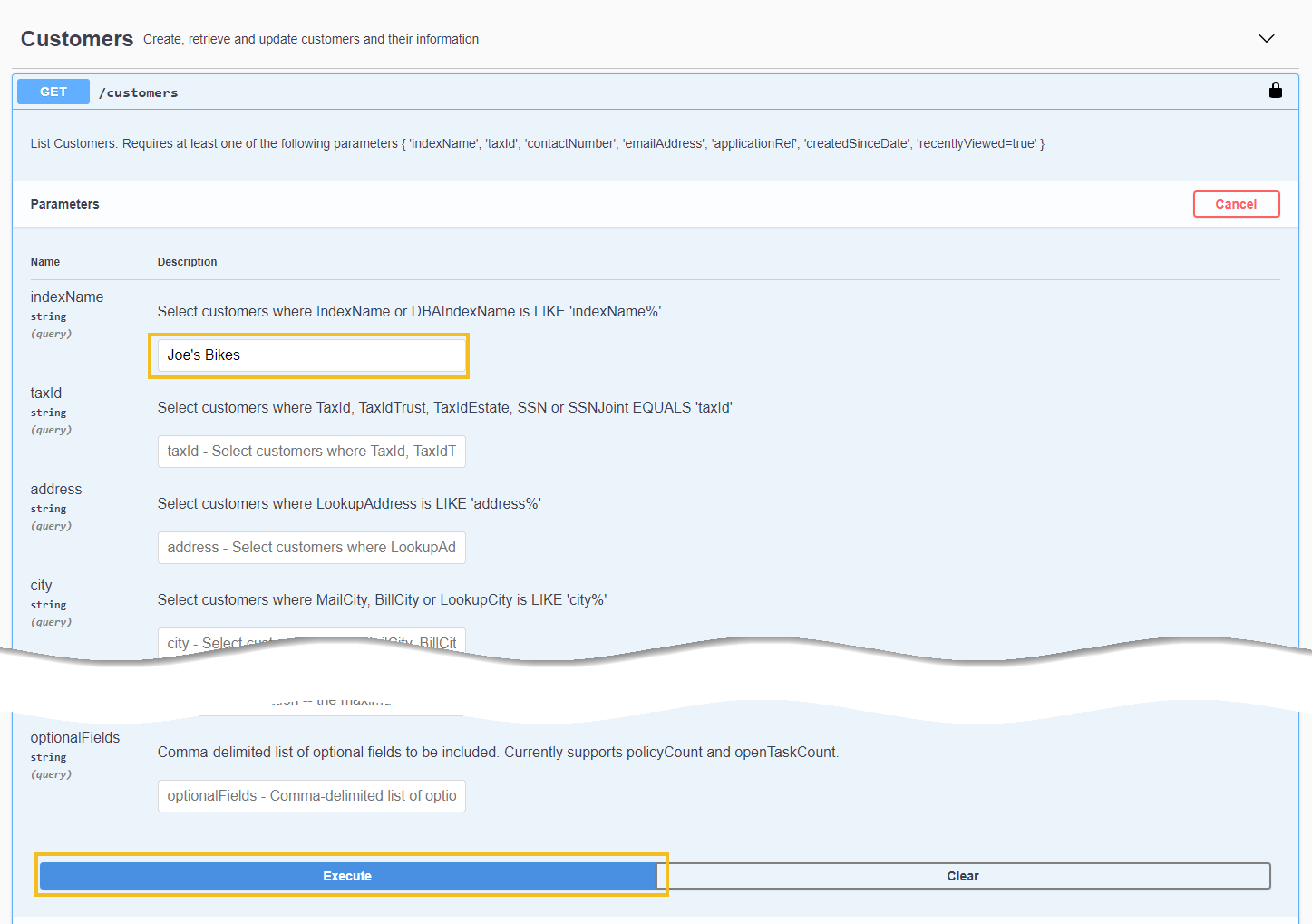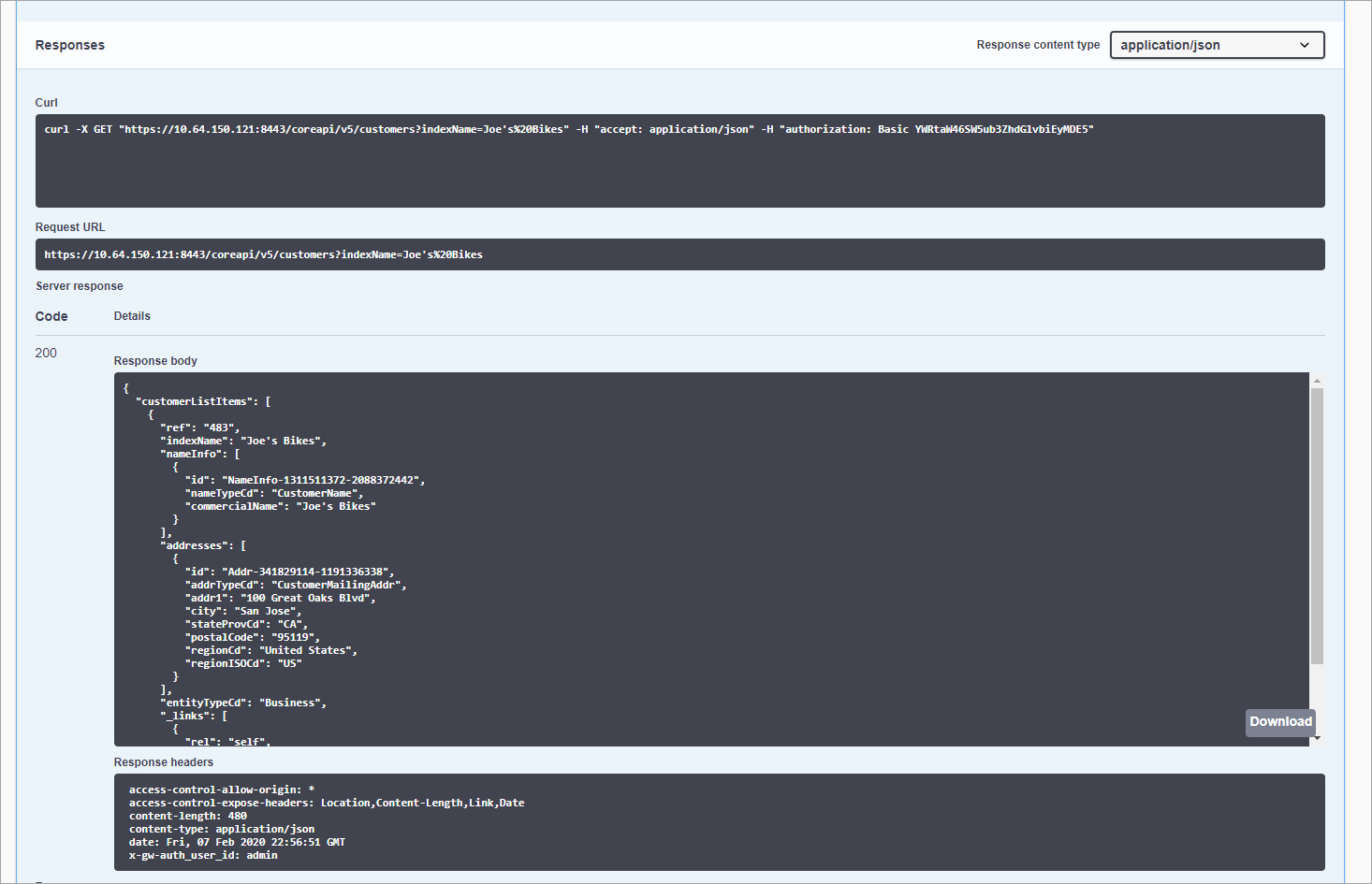Overview
Guidewire InsuranceNow API
Connect apps and services or build your own experience with the Guidewire InsuranceNow API.
The InsuranceNow API provides RESTful API access to InsuranceNow functionality. With the API, you can connect InsuranceNow to a variety of third-party apps and services. Extend the functionality of InsuranceNow, provide unique and differentiating user experiences, or automate workflows with a fully-integrated core platform.
Built according to the OpenAPI specification, the InsuranceNow API is easy to learn, easy to use, and offers the functionality you need to deliver high-quality projects on time.
Developers can access a new API reference for InsuranceNow without a Guidewire Documentation account. This enables developers working on InsuranceNow projects to explore the API endpoints, learn about the capabilities of the API, and begin to design integration projects. In addition to the core API reference, the public documentation also includes the InsuranceNow Portal Development Guide. This guide provides clear instructions on leveraging the API for three common use cases:
- Developing a consumer sales portal
- Developing a consumer service portal
- Developing an agent/broker portal
Developers with access to an InsuranceNow environment are also able to view and interact with the API endpoints via a native interface in InsuranceNow. The interactive API uses the Swagger OpenAPI specification to view the API resources, as well as execute calls to the API from within the interface. You can learn more about the native interface by reading the InsuranceNow Portal Development Guide at Guidewire Documentation.
Related info
Getting Started
Guidewire InsuranceNow API Concepts
The Guidewire InsuranceNow API uses the Representational State Transfer (REST) architecture to issue requests and receive responses from the server.
Resources
Resources and sub-resources identify the objects that can be created, retrieved, and updated by the RESTful API. When using the API, data objects such as a quote, application, or customer are resources. Data objects such as a coverage or driver on a specific policy are considered sub-resources./applications/{systemId}is an example of a resource and /applications/{systemId}/drivers/{driverNumber}is an example of a sub-resource. Using sub-resources is useful when you need access to certain details such as the list of coverages on a specific risk.
Methods
The v5 API uses GET, PATCH, PUT, POST, and DELETE methods to create, read, update, and delete resources. Some methods are safe and some are idempotent. Safe methods do not modify resources. An idempotent method can be called multiple times and the result on the resource is the same. Methods that are safe are also idempotent.
Full Endpoints
For certain resources, the API provides an endpoint that interacts with the entire payload of that resource and an endpoint that interacts with the resource without including all of its sub-resources. API endpoints that end with /full interact with the entire resource which includes the sub-resources. For example, PUT/applications/{systemId}requires less payload than PUT /applications/{systemId}/full. The payload for PUT /applications/{systemId}/full needs to include content about sub-resources such as locations and lines.
Links
The body of the API response can include one or more _links sections. These links provide direct access to other related items you might want to access. For example, when you get the full application response there are many sets of links available in the response. The coverages section of the full application response includes links to the coverage, its parent, and the associated list of coverage items:
...
"coverages": [
{
...
"_links": [
{
"rel": "self",
"href": "/coreapi/v5/applications/883/lines/Homeowners/risks/1/coverages/CovA"
},
{
"rel": "parent",
"href": "/coreapi/v5/applications/883/lines/Homeowners/risks/1"
},
{
"rel": "coverageItems",
"href": "/coreapi/v5/applications/883/lines/Homeowners/risks/1/coverages/CovA/coverageItems"
}
]
Try it out
Make Your First Guidewire InsuranceNow API Call
The interactive API includes an option to “try out” the API. The Try it out option executes the API requests against the environment that you access. To perform test operations, use the Try it out option on the development or quality assurance environments.
To “try out” an API request, you enter authentication information, enter request parameters, execute the request, and then view the response.
Authentication
Authentication tokens and authorization credentials are created and entered in the API “try it out” interface. For full instructions on generating and entering tokens, read the full documentation.
Results
Immediately see the results of your API request. Server response codes 200 or 201 indicate a successful API Call.


